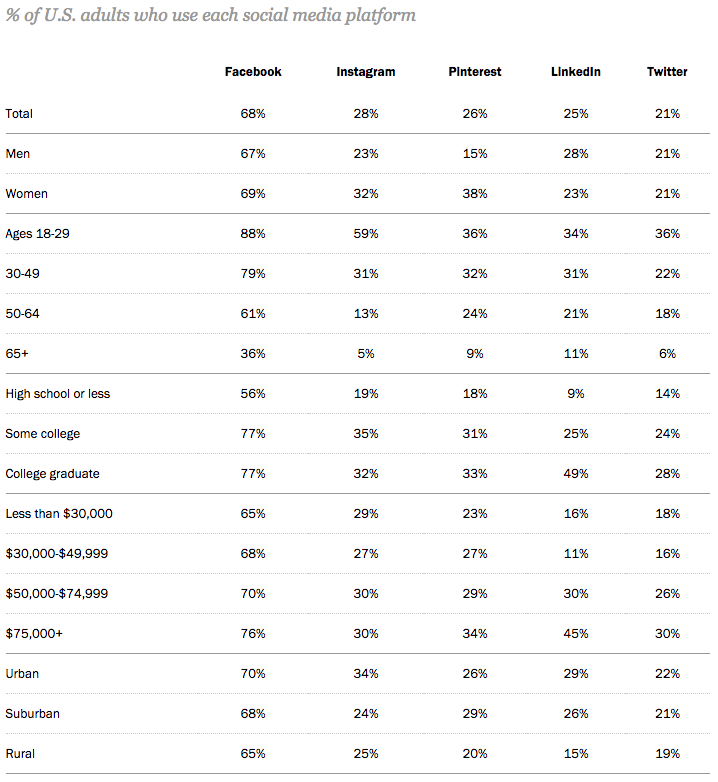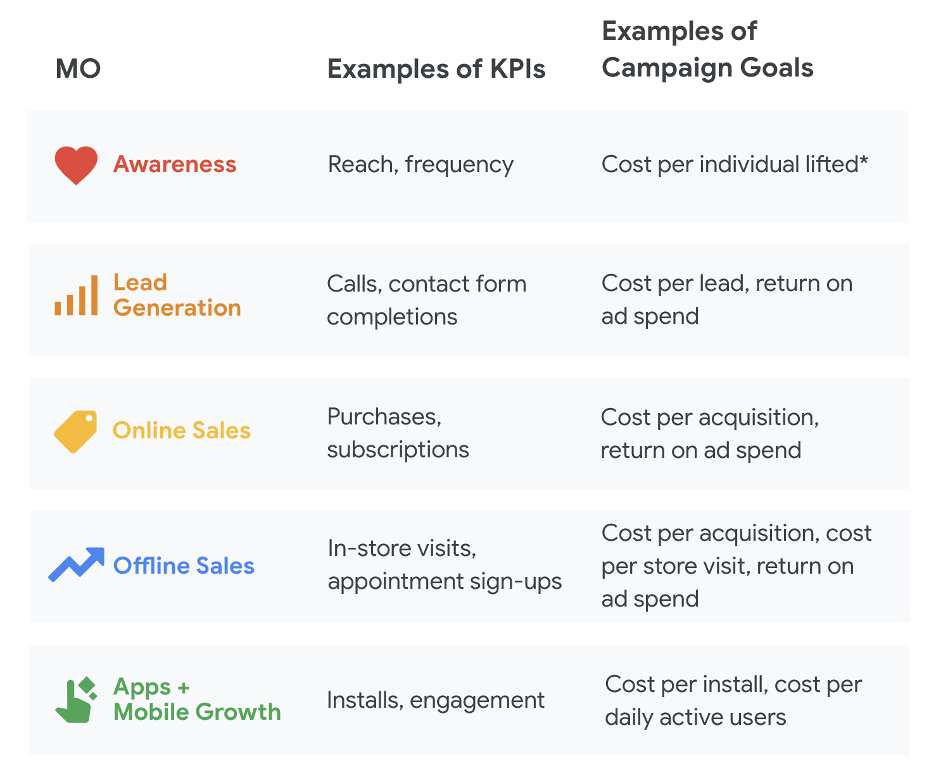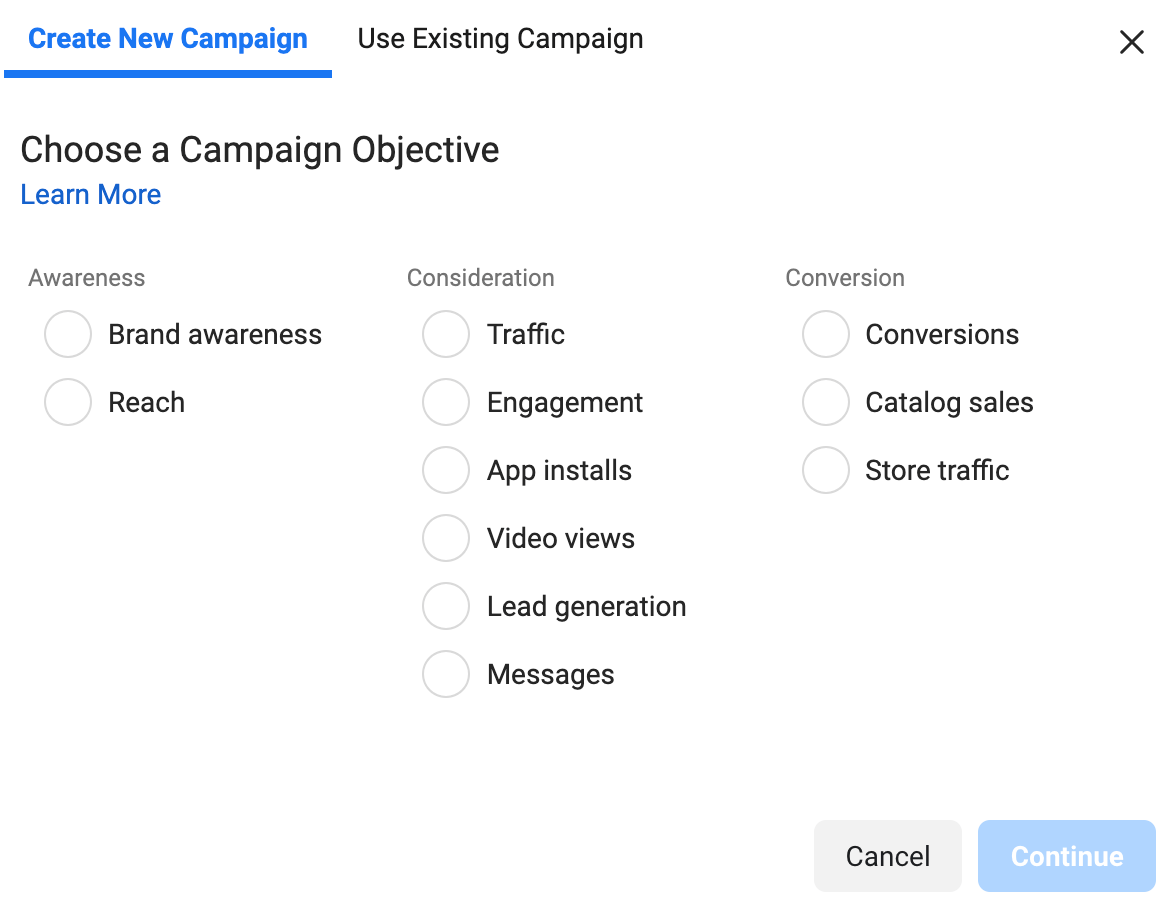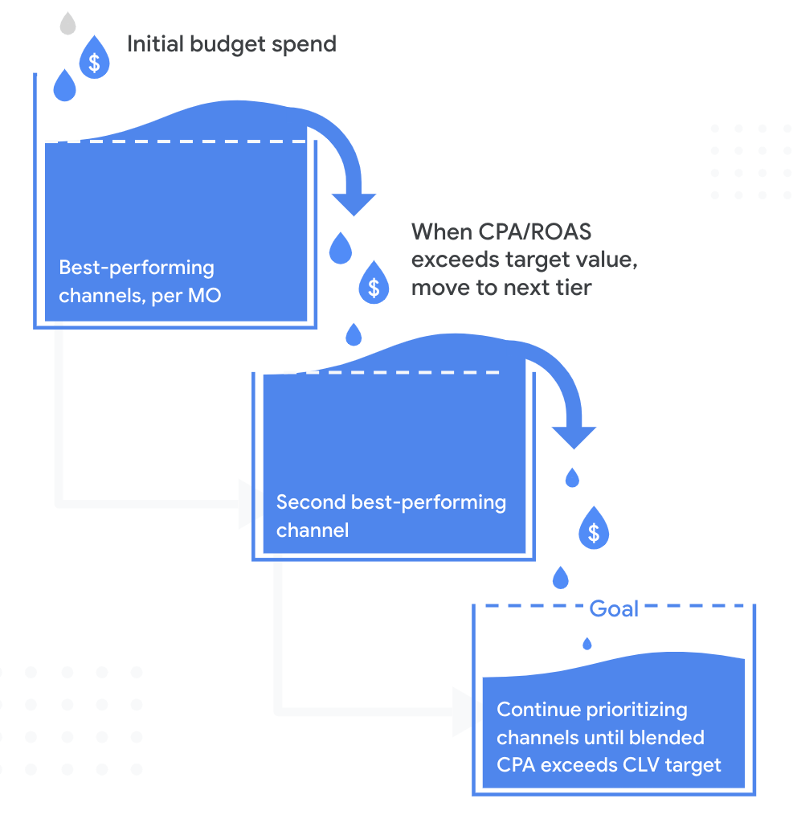Social media can be one of the most effective marketing channels for all kinds of businesses.
The biggest social media platforms have a large audience base and make it easy to target users based on their interests and personal characteristics.
While a big social media following can be beneficial, you don’t need to have a huge following to market your business on social media.
In this guide, I’ll go through how to market your business on social media even if you have zero followers.
Benefits of Having Social Media Followers
There are several benefits to having a large number of social media followers. To start, it indicates popularity. A social media profile with 10,000 followers is obviously more popular than a page with 1,000 followers.
Pages that are more popular appear more trustworthy, which is key to standing out in today’s competitive landscape.
Pages with more followers also have a wider audience base to reach with organic posts. Not all your followers will see your posts as social media platforms continue to update their algorithms to cut down on the number of people you are able to reach with organic content.
But even if your organic posts only reach 4% of your followers, a page with 10,000 followers will reach ten times as many people as a page with 1,000 followers.
How to Market Your Business On Social Media Without a Following
- Choose your social media networks
- Optimize your business pages
- Add some posts to your pages
- Set your marketing goals
- Setup conversion tracking
- Start with Facebook ads
- Take advantage of machine learning
- Optimize your advertising budget
1. Choose your social media networks
Before you invest the time and money to market your business on social media, it’s important to understand that not every business should focus its attention on every social media platform.
Each platform has a different purpose and functions in a different manner. Each also has a unique user base as different demographics prefer different social media platforms.
Producing great social content and maintaining a highly-active presence won’t do much good if the people that you want to reach are not present.
You should find the best social media networks for your business by defining your customer profile and understanding the prominent demographics of the user bases of the most popular social media platforms.
Defining your customer profile
Your customer profile should list all the traits that your ideal customer would have.
Start by analyzing your current customers to find common attributes among them.
Here are some of the attributes you should look for:
- Demographics: Demographics include attributes like gender, age, race.
- Socioeconomics: These attributes relate to education level, income level, household size, and neighborhood.
- Psychographics: This data gives insights into your customers’ beliefs and values and includes attributes like pain points, activities, lifestyle choices.
Once you have defined your target customer profile, you can compare it to the predominant user base of each social media platform to find the best matches for your business.
Social media platform demographics
Let’s take a look at the core characteristics of the audiences for each of the most popular social media platforms.

Facebook - Facebook is the most popular social media platform (not counting Youtube) and has a healthy amount of users across all demographic groups as over 50% of all age brackets (except those 65 and over) use the platform. It is also equally popular among men and women and different levels of income.
Instagram - Instagram is predominantly used by people between the age of 18 and 29 and is more popular among women than men. The audience is spread fairly evenly among income brackets but is slightly more popular in urban areas.
Twitter - Twitter is more popular with younger age groups and is used equally among men and women. Individuals with at least some higher education use the platform more than those without it.
Pinterest - Pinterest is more popular among women and people ages between 18 and 49. Pinterest’s user base also has a higher average income which can make it a very effective channel for businesses selling luxury goods.
Linkedin - As a social network for professionals, LinkedIn is most popular among users between the ages of 18 and 49. Like Pinterest, users have a higher income on average when compared to platforms like Facebook, Instagram, and Twitter. LinkedIn is popular among decision-makers at companies so if your business sells B2B products or services it can be a great channel for generating high-quality leads.
Resources to Learn More About Social Media Marketing
2. Optimize your business pages
Once you identify the social media platforms that present the best opportunity for your business, you will need to create your accounts and begin optimizing your business pages so that they have the intended effect.
Let’s examine the different elements of your business pages you should optimize before creating content and trying to grow your following.
As I break down the key components, I will use USAA’s Facebook page to give some firsthand examples of a business optimizing its profile appropriately.

Up to date info
This may seem obvious, but many brands create their social media accounts and never complete their profiles. You’ll want to create a high-quality description of your business, filled with accurate information.
Locations and contact methods should be up to date and if your profile is linked to a store catalog, only available products should be present.
Facebook will take the longest to complete as it has more profile fields than other social media platforms. The core information such as locations and contact details should be the same across all your social media pages.
Your business description doesn’t need to be exactly the same as you can make slight adjustments to account for the design and audience of a particular platform. But there should be consistency across platforms as you should use the same keywords and present your brand in the same manner.
If you look at USAA’s Facebook page you’ll see a complete and up to date description as well as current contact information.
Images
Images are a core part of any business’ social media profile. They help convey your brand’s messaging and are effective for engaging your target audience.
Images on your business page should be high-quality, relevant to your target customer profile, and consistent. Consistency across your images will establish your brand identity and make it easier for your customers to recognize your business on sight.
Upon scanning the images on USAA’s Facebook page, you’ll see a consistent use of the company’s blue branding color throughout the photos.
Friendly URL
For business profiles, having a clean URL (or social media handle) is important for maintaining your brand image. Friendly URLs also make it easier for your audience to search and find your business page.
In the same way, consistency across designs and images can increase brand recognition, consistent social media handles/URLs across can have the same effect.
If you look at our example USAA Facebook page, the handle is as simple and direct as can be:
https://www.facebook.com/USAA
Any visitor who wants to contact the company through Facebook Messenger can simply type in @USAA to pull up the chat.
If you look at the URLs for the company’s Instagram and Twitter profiles, you’ll notice they are the same with a simple /USAA.
Profile image, logo, and cover photo
Your profile image and cover photo are usually the first things a visitor sees when landing on your business page. It is generally a best practice to use your business logo as your profile to provide immediate brand recognition.
Each social platform has different requirements for image dimensions for cover and background photos so you want to be aware of the differences so that your photos fit with each platform.
Contact points
Your business page should make it easy for your visitors to know how to contact you. The important contact points to provide on your page include:
- Website URL
- Phone number
- Email address
- Locations (if applicable)
Platforms like Facebook and Instagram have contact points built-in to the platform with Messenger and Direct Message.
For these communication methods, it is important to actively monitor and respond to incoming messages as these are channels many visitors will use when they want to reach out to your business for the first time.
Call to action
If you want to eventually turn your visitors and followers into leads or customers, eventually you will need to get them to take some actions after landing on your business page.
By adding a relevant call to action you can get your visitors to take the step down your marketing funnel. This could be visiting your website, signing up for an email list, or purchasing something from your Facebook Shop.
Going back to USAA’s Facebook Page, in the About section you can see a CTA directing users to their site with the following message:
Find out how we are supporting our members and the community at usaa.com/coronavirus.
3. Add some posts to your pages

After you create your social account for the most relevant platforms and optimize your business pages, you’ll want to begin adding content to your pages.
Doing so will make your business appear active to any visitors instead of having pages that look deserted and unmaintained.
If someone were to land on one of your social media pages and the most recent post was weeks ago, that person is unlikely to follow you or come back and check for updates.
After all, what’s the point of following a business that isn’t posting content?
You can start by posting links to content on your website, whether it’s blog posts or product pages.
If your business lacks relevant content to post, you can get started by sharing other pages’ content to add some activity to your profile.
4. Set your marketing goals
If you begin posting content on social media without a coherent plan, you are not likely to find success.
To ensure that you are getting the most of your social media marketing efforts, you’ll want to define your marketing goals and determine how you will measure your progress towards those goals.
Now, different businesses will have different objectives from their social media marketing campaigns.
If you’re a business that provides some form of professional service your social media objectives aren’t going to look the same as a retailer that sells physical products.
Here are some of the more common goals for social media marketing and how to measure their success.

Brand awareness
Brand awareness indicates how popular your business is on social media and how many people even know that you exist or what your products and services are like.
If your goal is to improve brand awareness you can design your marketing campaigns to hit a certain cost per brand lift. This metric measures the effect that your marketing campaigns on brand awareness by assessing users’ recognition and approval of your brand before and after the campaign.
Other metrics that will help you measure the impact of your campaigns on brand awareness include:
- Reach
- Brand mentions
- Impressions
- Shares
Lead generation
Social media can be a powerful tool for generating leads to fill your business’ sales funnel.
Most prospects aren’t going to make a purchase the first time they encounter your business so the ability to collect their contact information to continue the conversation can make your social media marketing campaigns worth the effort.
If lead generation is your social media marketing objective, you can design your campaigns to hit a target cost per lead.
Important metrics to monitor the success of your lead generation efforts include:
- Email subscriptions
- Contact form completions
- Phone calls
Sales
The goal of your social media marketing campaign could simply be to generate sales. When your social media campaigns lead directly to sales, it’s easy to see the value of your efforts.
If your social media goal is to drive more sales you could design your campaigns to hit a certain cost per acquisition (CPA) or return on ad spend (ROAS).
The following metrics will help you measure the impact of your campaigns on
- Sales by channel
- Conversion rate
Mobile apps growth
Businesses with a mobile app can use their social presence to increase downloads and spread awareness.
If you choose to focus on app growth as a marketing objective, you could structure your campaign to hit a target cost per install or cost per daily active user.
Useful metrics to measure the growth of your mobile app include:
- Installs
- App engagement
- Daily active users
5. Setup conversion tracking
Without proper conversion tracking, you won’t be able to measure the effectiveness of your advertising campaigns. Conversion tracking is also needed to take advantage of the advanced AI functionality offered by platforms like Google and Facebook.
By enabling conversion tracking within your Google campaigns, you can get a clear idea of what is working well and what is not. You can then optimize your ad copy and other components to improve your results.
Conversion tracking will also allow you to use Google’s automated bidding features. With access to your conversion data, Google can look at the characteristics of the customers that are converting on your site to optimize the bids for your ads.
Searches from customers who match the traits of your previous buyers will receive higher bids, while searches from customers who seem less likely to purchase based on your conversion data will receive lower bids. The result is a more efficient use of ad spend and increased conversion rates.
You can enable conversion tracking for your Facebook campaigns by installing the Facebook pixel on your website. Facebook will then track all the conversions on your website and you can view the data in your Facebook Ads Manager.
The conversion data will allow you to define custom audiences and run highly-targeted dynamic ad campaigns.
6. Start with Facebook ads

Facebook has a diverse user base and is popular among nearly every demographic. This makes it an effective marketing channel for all kinds of business.
Once you optimize your profiles and start consistently creating content, you can increase your reach on Facebook by running paid advertisements.
Be sure to install the Facebook Pixel before launching your campaigns as the tracking and remarketing data that it allows you to collect will help you optimize your ads going forward.
Launch your campaigns
When you log in to Facebook Ads Manager to create your campaign you’ll notice that Facebook gives you 11 different marketing objectives you can assign to the campaign based on what you want to achieve. This includes:
- Brand awareness
- Reach
- Traffic
- Engagement
- App installs
- Video views
- Lead generation
- Messages
- Conversions
- Catalog sales (for Facebook Shops)
- Physica store traffic
Audience Targeting
After you set your objective, you’ll define the audience for the ad. You can add a custom audience (I’ll explain this more later on) or you can create your audience by selecting characteristics like age, gender, and location.
Facebook will give you an estimate of your potential ad reach and this number will adjust as you change the audience criteria.
Different types of Facebook ads
Facebook provides businesses a wide range of ad types to use for their campaigns. Some of the more effective ad formats include:
- Image ads
- Video ads
- Carousel ads
- Collection ads
- Dynamic ads
You will also have the option of where to place your ads. You can select Automatic Placements and Facebook will automatically place your ads across its different properties including Instagram, Messenger, and the Audience Network.
Or, you can choose to only have your ads appear in certain places and can filter the placements based on platform, device type, operating system, and more.
It will take time and some trial and error before you master the art of Facebook Advertising to yield maximum results.
7. Take advantage of machine learning
You can improve your advertising campaigns by taking advantage of the machine learning capabilities offered by platforms like Facebook and Google.
Lookalike audiences
With Facebook Lookalike audiences, you can use your previous website visitors and customers to target an audience with similar characteristics.
This allows you to bring more qualified prospects to your business and improve the efficiency of your ad spend.
You simply give Facebook details about what your target customer looks like, and Facebook will use their machine learning algorithms to provide you a new audience segment full of users that match your criteria.
Some of the different sources you can use for your lookalike audiences include:
- A customer file with your customer’s email addresses
- Website visitors who viewed certain pages or took a specific action
- People who have previously engaged with your business on Facebook or Instagram
- People who have engaged with your business through offline channels
Google Dynamic Responsive Ads
Responsive dynamic ads on Google are a mix of text and banner ads as they contain both a text and an image component.
The ads are responsive to the space they are being served. Google will choose from the many possible text and image combinations to display an ad that is most relevant to the user and the medium in which the ad is being placed.
You can choose to target your responsive ads on all devices or you can fine-tune the targeting to only show on specific devices.
Because Google leverages its machine-learning algorithm to serve the best possible ad combination unique to each placement and user, these ads can be highly effective at improving click-through rate and yielding better ad performance.
Google Smart Campaigns

With Google Smart Campaigns, you can take advantage of Google’s machine learning capabilities to streamline how you create and manage your advertising campaigns.
Regular Google Ads have a wide range of components you need to configure. This includes ad creation, keyword research, bidding, placement, and more.
Individuals and businesses with less digital marketing experience or time available to properly see to all these components can find it challenging to create effective campaigns.
With Smart Campaigns, Google fully automates most of the campaign creation and management. They will create ads based on your business’ website and use an algorithm to select the targeting options.
Once your campaigns are up and running, Google’s algorithm will consistently look for areas of improvement and adjust your campaigns accordingly.
8. Optimize your advertising budget

When you invest valuable financial resources into advertising your business on social media, it is essential to optimize your advertising budget to get the best results.
It can be tempting to spread your budget out across a variety of different channels, however, this is not recommended.
After you identify which social media channel presents the best opportunity for your business, you should focus your ad spend on that channel.
You can then evaluate the success of your ads on that channel and make changes only if you are not seeing the results that you want.
There are several important metrics you will need to monitor to evaluate the success of your advertising campaigns:
Cost per Acquisition (CPA) - This metric measures the average cost it takes to acquire a new customer. For example, if you spend $1,000 on a campaign that leads to 10 sales from new customers your CPA for the campaign is $100.
Customer Lifetime Value (CLV) - This metric measures the average total amount of profit each customer will bring to your business over their lifetime. To find your CLV you multiply your transactions per period, average order value, average gross margin, and average customer lifespan. You then divide this amount by the number of customers per period.
Return on Ad Spend (ROAS) - You calculate this metric by simply dividing your revenue generated from an ad campaign by the amount spent on ads. You can multiply this number by 100 to find a percentage of return. For instance, if you spend $1,000 on an ad campaign that generates $5,000 in ad revenue your ROAS is $5 for every $1 invested or 500%.
When measuring the efficacy of a campaign, you should look for the CLV of the customers you gain to exceed the CPA. This simple comparison will tell you if you make more from each customer over their lifetime than you pay to acquire them.
If your advertising campaigns for your primary social media channel consistently perform well, there isn’t a need to divert your advertising budget to different channels.
But if your campaigns start to see diminishing returns or stop yielding the target results, you can consider shifting part of your ad budget into secondary channels.
Key Learnings
A large social media following can be beneficial but you can still market your business on social media without one.
The first step to marketing your business on social media is to choose the best social media networks to focus on. To do this, you’ll define your customer profile and match it to the predominant characteristics of the audiences for different social media networks to find which platform is best for reaching your desired audience.
Once you choose your social networks, you can begin optimizing your business pages by adding all crucial components such as contact info, about us, profile image, cover photo, and making sure you have a clean and friendly social handle/URL.
Visitors are unlikely to engage with an inactive page, so it's important to begin posting content regularly so that your business appears active.
You also want to establish your marketing goals early on and how you’ll measure their success. Popular social media marketing goals include:
- Brand awareness
- Lead generation
- Sales
- Mobile app growth
If you want to take full advantage of everything Facebook has to offer, you can begin running Facebook Ads campaigns.
It’s important to set up conversion tracking before launching your campaigns so you can better understand your performance and make use of Google and Facebook’s AI capabilities.
This will allow you to use tools like Facebook custom audiences or Google Smart Campaigns to improve your ad campaigns by targeting a highly-target group of people and optimizing your bidding strategies.
Another way to get the most of your campaigns is to optimize your ad budget. You can do this by focusing your ad spend on the most profitable channel and only diverting your budget to other channels when you stop seeing results.
You may not have a social following right now, but if you follow the steps in this guide you can market your business while building your following as you go.



